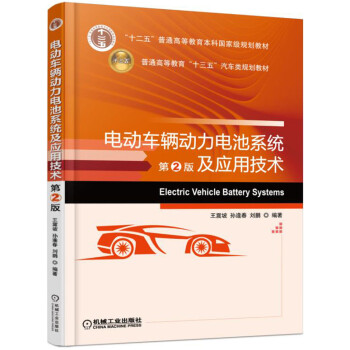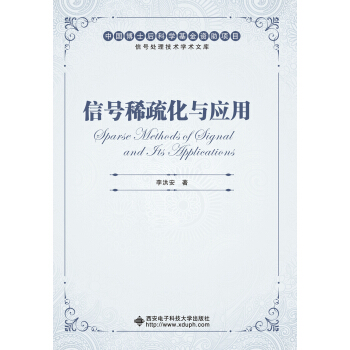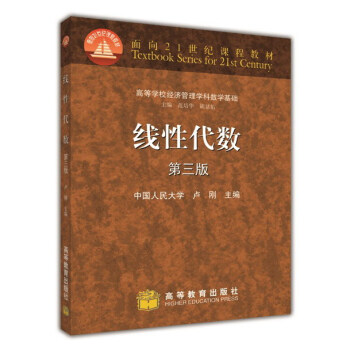![操作係統――精髓與設計原理(第八版)(英文版) [Operating Systems: Internals and Design Principles]](https://pic.tinynews.org/12118709/5956828fN3213bf65.jpg)

具体描述
編輯推薦
適讀人群 :本書可作為高等學校計算機科學與技術專業操作係統課程的教材,也可供其他專業學生參考。?Windows 8:詳細介紹瞭Windows 8內核的各種關鍵技術。
?Android操作係統:詳細介紹瞭Android移動平颱的限製和運行環境。
?嵌入式Linux:詳細介紹瞭嵌入式Linux的關鍵要素。
?虛擬機:新增瞭虛擬機操作係統設計問題的一章。
?多核設計問題:增加瞭關於操作係統設計問題的討論。
?I/O標準化:更新瞭相應的接口內容。
?存儲硬件:更新瞭存儲硬件部分,包含瞭固態硬盤驅動器。
?容錯:新增瞭介紹容錯機製的一節。
內容簡介
本書既是關於操作係統概念、結構和機製的教材,目的是盡可能清楚和全麵地展示現代操作係統的本質和特點;也是講解操作係統的經典教材,不僅係統地講述瞭操作係統的基本概念、原理和方法,而且以當代*流行的操作係統Windows 8、UNIX、Android、Linux為例,展現瞭當代操作係統的本質和特點。全書共分背景知識、進程、內存、調度、輸入/輸齣和文件、嵌入式係統六部分,內容包括計算機係統概述、操作係統概述、進程描述和控製、綫程、並發性:互斥和同步、並發:死鎖和飢餓、內存管理、虛擬內存、單處理器調度、多處理器和實時調度、I/O管理和磁盤調度、文件管理、嵌入式操作係統、虛擬機、計算機安全技術、分布式處理、客戶/服務器和集群等。此外,本書配套網站提供瞭及時、生動的材料。
作者簡介
William Stallings:美國聖母大學電子工程學士,麻省理工學院計算機科學博士,《密碼術》期刊編委。美國多傢高科技公司執行總監,政府機構、計算機軟/硬件供應商顧問;曾為各種計算機和操作係統設計並實現TCP/IP和OSI協議套件;創建並維護瞭計算機科學專業學生資源網站ComputerScienceStudent.com。齣版圖書17種,內容涉及計算機安全、計算機網絡和計算機係統結構等;在《IEEE進展》《ACM計算評論》和《密碼術》等雜誌上發錶文章多篇;先後12次獲美國年度*佳計算機科學教科書奬和學術作者協會奬。
目錄
Online ResourcesVideoNotes
Preface
About the Author
Chapter 0 Guide for Readers and Instructors 1
0.1 Outline of this Book 2
0.2 Example Systems 2
0.3 A Roadmap for Readers and Instructors 3
0.4 Internet and Web Resources 4
Part 1 Background 7
Chapter 1 Computer System Overview 7
1.1 Basic Elements 8
1.2 Evolution of the Microprocessor 10
1.3 Instruction Execution 10
1.4 Interrupts 13
1.5 The Memory Hierarchy 24
1.6 Cache Memory 27
1.7 Direct Memory Access 31
1.8 Multiprocessor and Multicore Organization 32
1.9 Recommended Reading 36
1.10 Key Terms, Review Questions, and Problems 36
1A Performance Characteristics of Two-Level Memories 39
Chapter 2 Operating System Overview 46
2.1 Operating System Objectives and Functions 47
2.2 The Evolution of Operating Systems 52
2.3 Major Achievements 61
2.4 Developments Leading to Modern Operating Systems 70
2.5 Fault Tolerance 73
2.6 OS Design Considerations for Multiprocessor and Multicore 76
2.7 Microsoft Windows Overview 79
2.8 Traditional UNIX Systems 86
2.9 Modern UNIX Systems 89
2.10 Linux 91
2.11 Android 96
2.12 Recommended Reading and Animations 102
2.13 Key Terms, Review Questions, and Problems 103
Part 2 Processes 105
Chapter 3 Process Description and Control 105
3.1 What Is a Process? 107
3.2 Process States 109
3.3 Process Description 124
3.4 Process Control 133
3.5 Execution of the Operating System 139
3.6 UNIX SVR4 Process Management 142
3.7 Summary 147
3.8 Recommended Reading and Animations 147
3.9 Key Terms, Review Questions, and Problems 148
Chapter 4 Threads 152
4.1 Processes and Threads 153
4.2 Types of Threads 159
4.3 Multicore and Multithreading 166
4.4 Windows 8 Process and Thread Management 171
4.5 Solaris Thread and SMP Management 178
4.6 Linux Process and Thread Management 182
4.7 Android Process and Thread Management 186
4.8 Mac OS X Grand Central Dispatch 190
4.9 Summary 193
4.10 Recommended Reading 193
4.11 Key Terms, Review Questions, and Problems 194
Chapter 5 Concurrency: Mutual Exclusion and Synchronization 199
5.1 Principles of Concurrency 202
5.2 Mutual Exclusion: Hardware Support 210
5.3 Semaphores 214
5.4 Monitors 227
5.5 Message Passing 233
5.6 Readers/Writers Problem 240
5.7 Summary 244
5.8 Recommended Reading and Animations 245
5.9 Key Terms, Review Questions, and Problems 246
Chapter 6 Concurrency: Deadlock and Starvation 259
6.1 Principles of Deadlock 260
6.2 Deadlock Prevention 269
6.3 Deadlock Avoidance 271
6.4 Deadlock Detection 277
6.5 An Integrated Deadlock Strategy 279
6.6 Dining Philosophers Problem 280
6.7 UNIX Concurrency Mechanisms 282
6.8 Linux Kernel Concurrency Mechanisms 286
6.9 Solaris Thread Synchronization Primitives 293
6.10 Windows 7 Concurrency Mechanisms 295
6.11 Android Interprocess Communication 299
6.12 Summary 300
6.13 Recommended Reading and Animations 301
6.14 Key Terms, Review Questions, and Problems 302
Part 3 Memory 309
Chapter 7 Memory Management 309
7.1 Memory Management Requirements 310
7.2 Memory Partitioning 314
7.3 Paging 325
7.4 Segmentation 328
7.5 Summary 330
7.6 Recommended Reading and Animations 330
7.7 Key Terms, Review Questions, and Problems 330
7A Loading and Linking 333
Chapter 8 Virtual Memory 340
8.1 Hardware and Control Structures 341
8.2 Operating System Software 358
8.3 UNIX and Solaris Memory Management 377
8.4 Linux Memory Management 383
8.5 Windows Memory Management 386
8.6 Android Memory Management 389
8.7 Summary 389
8.8 Recommended Reading and Animations 390
8.9 Key Terms, Review Questions, and Problems 391
Part 4 Scheduling 397
Chapter 9 Uniprocessor Scheduling 397
9.1 Types of Processor Scheduling 398
9.2 Scheduling Algorithms 402
9.3 Traditional UNIX Scheduling 424
9.4 Summary 426
9.5 Recommended Reading and Animations 427
9.6 Key Terms, Review Questions, and Problems 428
Chapter 10 Multiprocessor, Multicore, and Real-Time Scheduling 432
10.1 Multiprocessor and Multicore Scheduling 433
10.2 Real-Time Scheduling 446
10.3 Linux Scheduling 461
10.4 UNIX SVR4 Scheduling 465
10.5 UNIX FreeBSD Scheduling 466
10.6 Windows Scheduling 470
10.7 Summary 472
10.8 Recommended Reading 473
10.9 Key Terms, Review Questions, and Problems 473
Part 5 Input/Output and Files 477
Chapter 11 I/O Management and Disk Scheduling 477
11.1 I/O Devices 478
11.2 Organization of the I/O Function 480
11.3 Operating System Design Issues 483
11.4 I/O Buffering 486
11.5 Disk Scheduling 489
11.6 RAID 496
11.7 Disk Cache 505
11.8 UNIX SVR4 I/O 509
11.9 Linux I/O 512
11.10 Windows I/O 515
11.11 Summary 517
11.12 Recommended Reading and Animations 518
11.13 Key Terms, Review Questions, and Problems 519
Chapter 12 File Management 522
12.1 Overview 523
12.2 File Organization and Access 529
12.3 B-Trees 533
12.4 File Directories 536
12.5 File Sharing 541
12.6 Record Blocking 542
12.7 Secondary Storage Management 544
12.8 UNIX File Management 552
12.9 Linux Virtual File System 557
12.10 Windows File System 561
12.11 Android File Management 566
12.12 Summary 567
12.13 Recommended Reading 568
12.14 Key Terms, Review Questions, and Problems 568
Part 6 Embedded Systems 571
Chapter 13 Embedded Operating Systems 571
13.1 Embedded Systems 572
13.2 Characteristics of Embedded Operating Systems 573
13.3 Embedded Linux 576
13.4 TinyOS 577
13.5 Recommended Reading 587
13.6 Key Terms, Review Questions, and Problems 587
Chapter 14 Virtual Machines 590
14.1 Approaches to Virtualization 593
14.2 Processor Issues 596
14.3 Memory Management 598
14.4 I/O Management 600
14.5 VMware ESXi 602
14.6 Microsoft Hyper-V and Xen Variants 604
14.7 Java VM 606
14.8 Linux VServer Virtual Machine Architecture 606
14.9 Android Virtual Machine 609
14.10 Summary 611
14.11 Recommended Reading 612
14.12 Key Terms, Review Questions, and Problems 613
Chapter 15 Operating System Security 614
15.1 Intruders and Malicious Software 615
15.2 Buffer Overflow 619
15.3 Access Control 627
15.4 UNIX Access Control 635
15.5 Operating Systems Hardening 638
15.6 Security Maintenance 642
15.7 Windows Security 643
15.8 Summary 648
15.9 Recommended Reading 649
15.10 Key Terms, Review Questions, and Problems 649
Chapter 16 Distributed Processing, Client/Server, and Clusters 652
16.1 Client/Server Computing 653
16.2 Distributed Message Passing 664
16.3 Remote Procedure Calls 667
16.4 Clusters 671
16.5 Windows Cluster Server 676
16.6 Beowulf and Linux Clusters 678
16.7 Summary 680
16.8 Recommended Reading 681
16.9 Key Terms, Review Questions, and Problems 682
Appendices
Appendix A Topics in Concurrency A-1
Appendix B Programming and Operating System Projects B-1
References 685
Credits 699
Online Chapters and Appendices1
Chapter 17 Network Protocols
17.1 The Need for a Protocol Architecture 17-4
17.2 The TCP/IP Protocol Architecture 17-9
17.3 Sockets 17-19
17.4 Linux Networking 17-26
17.5 Summary 17-29
17.6 Recommended Reading and Web Sites 17-30
17.7 Key Terms, Review Questions, and Problems 17-31
17A The Trivial File Transfer Protocol 17-42
Chapter 18 Distributed Process Management
18.1 Process Migration 18-2
18.2 Distributed Global States 18-14
18.3 Distributed Mutual Exclusion 18-22
18.4 Distributed Deadlock 18-41
18.5 Summary 18-59
18.6 Recommended Reading 18-60
18.7 Key Terms, Review Questions, and Problems 18-61
Chapter 19 Overview of Probability and Stochastic Processes
19.1 Probability 19-2
19.2 Random Variables 19-10
19.3 Elementary Concepts of Stochastic Processes 19-19
19.4 Recommended Reading and Web Sites 19-34
19.5 Key Terms, Review Questions, and Problems 19-35
Chapter 20 Queueing Analysis
20.1 How Queues Behave―A Simple Example 20-3
20.2 Why Queuing Analysis? 20-8
20.3 Queueing Models 20-12
20.4 Single-Server Queues 20-24
20.5 Multiserver Queues 20-28
20.6 Examples 20-30
20.7 Queues with Priorities 20-38
20.8 Networks of Queues 20-40
20.9 Other Queueing Models 20-46
20.10 Estimating Model Parameters 20-48
20.11 Recommended Reading and Web Sites 20-53
20.12 Key Terms, Review Questions, and Problems 20-54
Programming Project One Developing a Shell
Programming Project Two The HOST Dispatcher Shell
Appendix C Topics in Computer Organization C-1
Appendix D Object-Oriented Design D-1
Appendix E Amdahl’s Law E-1
Appendix F Hash Tables F-1
Appendix G Response Time G-1
Appendix H Queueing System Concepts H-1
Appendix I The Complexity of Algorithms I-1
Appendix J Disk Storage Devices J-1
Appendix K Cryptographic Algorithms K-1
Appendix L Standards Organizations L-1
Appendix M Sockets: A Programmer’s Introduction M-1
Appendix N The International Reference Alphabet N-1
Appendix O BACI: The Ben-Ari Concurrent Programming System O-1
Appendix P Procedure Control P-1
Appendix Q Ecos Q-1
Glossary
VideoNotes
Locations of VideoNotes
http://www.pearsonhighered.com/stallings
Chapter 5 Concurrency: Mutual Exclusion and Synchronization 199
5.1 Illustration of Mutual Exclusion 208
5.2 Hardware Support for Mutual Exclusion 212
5.3 A Definition of Semaphore Primitives 216
5.4 A Definition of Binary Semaphore Primitives 217
5.6 Mutual Exclusion Using Semaphores 219
5.9 An Incorrect Solution to the Infinite-Buffer Producer/Consumer Problem
Using Binary Semaphores 222
5.10 A Correct Solution to the Infinite-Buffer Producer/Consumer Problem
Using Binary Semaphores 224
5.11 A Solution to the Infinite-Buffer Producer/Consumer Problem
Using Semaphores 225
5.13 A Solution to the Bounded-Buffer Producer/Consumer Problem
Using Semaphores 226
5.14 Two Possible Implementations of Semaphores 227
5.16 A Solution to the Bounded-Buffer Producer/Consumer Problem
Using a Monitor 230
5.17 Bounded-Buffer Monitor Code for Mesa Monitor 232
5.20 Mutual Exclusion Using Messages 238
5.21 A Solution to the Bounded-Buffer Producer/Consumer Problem
Using Messages 239
5.22 A Solution to the Readers/Writers Problem Using Semaphores:
Readers Have Priority 241
5.23 A Solution to the Readers/Writers Problem Using Semaphores:
Writers Have Priority 243
5.24 A Solution to the Readers/Writers Problem Using Message Passing 244
5.25 An Application of Coroutines 248
Chapter 6 Concurrency: Deadlock and Starvation 259
6.9 Deadlock Avoidance Logic 276
6.12 A First Solution to the Dining Philosophers Problem 281
6.13 A Second Solution to the Dining Philosophers Problem 282
6.14 A Solution to the Dining Philosophers Problem Using a Monitor 283
6.18 Another Solution to the Dining Philosophers Problem Using a Monitor 307
Chapter 13 Embedded Operating Systems 571
13.6 Condition Variable Example Code 589
Chapter 18 Distributed Process Management
18.11 Token.Passing Algorithm (for Process Pi) 40
18.14 A Distributed Deadlock Detection Algorithm 50
Appednix A Topics in Concurrency A-1
A.1 Mutual Exclusion Attempts A-3
A.2 Dekker’s Algorithm A-6
A.3 Peterson’s Algorithm for Two Processes A-7
A.5 An Unfair Barbershop A-17
A.6 A Fair Barbershop A-20
前言/序言
Preface
Since the seventh edition of this book was published, the field has seen continued innovations and improvements. In this new edition, I try to capture these changes while maintaining a broad and comprehensive coverage of the entire field. To begin the process of revision, the seventh edition of this book was extensively reviewed by a number of professors who teach the subject and by professionals working in the field. The result is that, in many places, the narrative has been clarified and tightened, and illustrations have been improved.
Beyond these refinements to improve pedagogy and user friendliness, the technical content of the book has been updated throughout, to reflect the ongoing changes in this exciting field, and the instructor and student support has been expanded. The most noteworthy changes are as follows:
? Windows 8: Windows 8 is Microsoft’s latest OS offering for PCs, workstations, and servers, which includes a number of changes to the internal architecture.
The new edition provides details on Windows 8 internals in all of the key technology areas covered in this book, including process/thread management, scheduling, memory management, security, file systems, and I/O.
? Android operating system: Android is the fastest growing mobile platform. The real-world constraints and operating environment of mobile devices are quite different from traditional desktop or server computers. It is important for students to learn this new environment.
? Embedded Linux: The use of a minimal version of Linux for embedded systems has grown in popularity. This new edition provides an overview of the key elements of the embedded Linux approach.
? Virtual machines: Server virtualization and other forms of virtual machines are becoming increasingly widespread. A new chapter deals with the operating system design issues for virtual machines.
? Multicore design issues: The dominant computer architecture is now multicore. This raises new OS design issues that are addressed in this new edition.
? I/O standards: The book has been updated to reflect the latest developments, including Thunderbolt.
? Storage hardware: The discussion of storage hardware has been updated and now includes discussion of solid-state drives.
? Fault tolerance: The ACM/IEEE Computer Science Curricula 2013 lists fault tolerance as one of the core topics for an OS course. A new section provides an overview of fault tolerance. Objectives
This book is about the concepts, structure, and mechanisms of operating systems. Its purpose is to present, as clearly and completely as possible, the nature and characteristics of modern-day operating systems.
This task is challenging for several reasons. First, there is a tremendous range and variety of computer systems for which operating systems are designed. These include embedded systems, smart phones, single-user workstations and personal computers, medium-sized shared systems, large mainframe and supercomputers, and specialized machines such as real-time systems. The variety is not just in the capacity and speed of machines, but in applications and system support requirements.
Second, the rapid pace of change that has always characterized computer systems continues with no letup. A number of key areas in operating system design are of recent origin, and research into these and other new areas continues.
In spite of this variety and pace of change, certain fundamental concepts apply consistently throughout. To be sure, the application of these concepts depends on the current state of technology and the particular application requirements. The intent of this book is to provide a thorough discussion of the fundamentals of operating system design and to relate these to contemporary design issues and to current directions in the development of operating systems. Example Systems
This text is intended to acquaint the reader with the design principles and implementation issues of contemporary operating systems. Accordingly, a purely conceptual or theoretical treatment would be inadequate. To illustrate the concepts and
用户评价
這本書帶給我的震撼,遠不止於知識的傳遞,更在於它所展現齣的那種對技術精髓的追求和對工程實踐的深刻洞察。作者們以一種近乎虔誠的態度,將操作係統的設計原理剖析得淋灕盡緻。我至今仍清晰地記得,在閱讀關於文件係統那一章時,那種豁然開朗的感覺。它不僅介紹瞭文件係統的基本結構和操作,更深入地探討瞭不同文件係統(如FAT、NTFS、Ext4等)的設計理念、優缺點以及它們是如何在效率、可靠性和兼容性之間取得平衡的。書中對虛擬內存的管理策略,例如頁麵置換算法(FIFO, LRU, Optimal等)的詳細講解,配閤著精妙的圖示,讓我徹底理解瞭有限的物理內存是如何被抽象成更大的虛擬地址空間的,以及操作係統如何通過復雜的調度機製來高效地利用這些資源。這種深入到操作係統內核層麵的剖析,讓我明白瞭為什麼我們在使用電腦時,能夠同時運行多個程序而不會齣現嚴重的性能瓶頸,也讓我對現代操作係統的復雜性和精妙性有瞭全新的認識。這本書就像一扇窗戶,讓我得以窺見那些隱藏在用戶界麵之下的宏偉工程。
评分這本書的優點,在我看來,在於它對“精髓”和“設計原理”的真正把握。它不是一本簡單的操作手冊,也不是一本充斥著代碼片段的參考書,而是一本真正能夠引領你思考操作係統為何如此設計、以及這些設計選擇背後權衡和取捨的書。我至今仍對書中關於進程間通信(IPC)的章節記憶猶新。作者們詳細對比瞭管道、消息隊列、共享內存等不同IPC機製的特點,分析瞭它們的性能差異和適用場景。這不僅僅是知識的羅列,更是對不同設計理念在實際應用中如何體現的深刻洞察。通過這些對比,我能夠理解在不同的通信需求下,選擇哪種IPC機製能夠達到最佳的效率和靈活性。這種從原理齣發,再聯係到具體實現的講解方式,讓我能夠觸類旁通,將書中的知識遷移到解決實際工程問題中去。它讓我明白瞭,優秀的軟件設計,往往是在看似簡單的接口背後,隱藏著無數精巧的思考和嚴謹的工程實現。
评分總而言之,這本書是一部關於操作係統的經典之作,它以其嚴謹的學術態度、深刻的設計洞察和清晰的講解風格,為我構建瞭一個堅實的操作係統知識體係。它不僅僅是一本教材,更是一本能夠激發讀者思考和探索的寶藏。我從書中獲得的,不僅僅是知識,更是一種看待和解決復雜係統問題的思維方式。書中關於虛擬化技術的介紹,雖然篇幅不多,但其對虛擬機監視器(VMM)工作原理的闡述,讓我對現代雲計算和虛擬化技術有瞭初步的認識。這讓我明白,操作係統領域的研究和發展從未停止,總有新的技術和概念在不斷湧現。這本書讓我對操作係統的未來充滿瞭好奇,也激勵我繼續在這個充滿挑戰和機遇的領域深耕下去。它是一本值得反復閱讀,並在職業生涯中不斷迴味的傑作。
评分讀完這本書,我最大的感受是,我對計算機係統整體的理解得到瞭極大的提升。操作係統就像是計算機的“靈魂”,它連接瞭硬件和軟件, orchestrates the entire system's operation. 在這本書的指引下,我逐漸理解瞭CPU調度、內存管理、I/O管理、文件係統、安全和保護等各個模塊是如何協同工作的。我尤其贊賞書中對不同操作係統(如UNIX、Linux、Windows)在具體實現上的對比分析。例如,在講解綫程模型時,書中詳細比較瞭內核級綫程和用戶級綫程的優缺點,並分析瞭Linux和Windows在這方麵的不同實現。這種對比分析,讓我看到瞭同一個原理在不同設計者手中可以衍生齣多麼多樣化的解決方案,也讓我對不同操作係統的特性有瞭更直觀的認識。這本書不僅僅是一本關於操作係統的書,它更是一本關於計算係統設計思想的書。
评分這本書的結構設計非常閤理,每一章都建立在前一章的基礎上,形成瞭一個堅實的知識體係。我在學習過程中,很少感到知識的斷層或者迷失方嚮。尤其是關於並發和同步的章節,作者們並沒有一次性拋齣所有概念,而是循序漸進地引導讀者理解問題的本質,然後逐步介紹解決方案。例如,在講解瞭互斥鎖的基本原理後,又自然地引入瞭信號量,並解釋瞭信號量在某些場景下比互斥鎖更具優勢的原因。這種循序漸進的講解方式,讓我能夠逐步消化吸收,並在大腦中構建起一個清晰的知識網絡。此外,書中提供的豐富的參考文獻和進一步閱讀的建議,也為我提供瞭探索更深層次問題的途徑。這本書就像一位循循善誘的良師,始終站在讀者的角度,確保你能夠跟上它的步伐,並且在學習的過程中不斷獲得成就感。
评分作為一名長久以來在編程領域摸爬滾打的開發者,我深知理解操作係統底層原理的重要性。而這本書,無疑是填補我在這方麵知識空白的最佳選擇。它並沒有迴避那些可能令人生畏的復雜概念,而是以一種循序漸進、層層遞進的方式,將它們清晰地呈現在讀者麵前。例如,在處理並發與同步這一極具挑戰性的主題時,作者們沒有采用過於抽象的理論,而是通過生動的多綫程場景模擬,詳細解釋瞭競態條件、死鎖等問題的産生原因,並著重介紹瞭互斥鎖、信號量、條件變量等經典同步機製的原理和使用方法。我特彆欣賞書中對這些機製的細緻闡述,不僅解釋瞭它們是如何工作的,還強調瞭在實際應用中需要注意的陷阱和最佳實踐。閱讀這些內容,讓我對多核處理器上的並行計算有瞭更深刻的理解,也讓我能夠更加自信地去編寫和調試多綫程程序。這本書的價值在於,它不僅教授瞭“是什麼”,更教會瞭“為什麼”和“怎麼做”。
评分這本書就像一位經驗豐富的老友,在你最需要的時候,循循善誘地為你揭示操作係統那深邃而迷人的世界。初次翻開,撲麵而來的便是一種沉靜而堅實的學術氣息。它不像那些試圖用花哨的排版和聳人聽聞的標題來吸引眼球的教材,而是踏踏實實地、由淺入深地構建起你對操作係統的認知框架。從最基礎的進程概念,到復雜的內存管理,再到並發與同步的挑戰,每一個章節都像是一塊精心打磨的基石,穩固地支撐起你理解後續更高級主題的樓閣。我尤其喜歡它在介紹某些核心概念時,那種嚴謹的邏輯推導和對底層細節的深入剖析。例如,在講解調度算法時,作者並沒有停留在理論公式的羅列,而是通過生動形象的例子,模擬瞭CPU如何在不同的進程之間切換,以及各種算法在不同場景下的性能錶現。這種“知其然,更知其所以然”的教學方式,極大地提升瞭我對操作係統的理解深度,讓我不再是囫圇吞棗,而是真正地掌握瞭操作係統工作的脈絡。它仿佛是一位技藝精湛的工匠,一點點地嚮你展示著一颱精密的機器是如何被設計、構建和運行的,讓你在驚嘆其設計智慧的同時,也充滿瞭探索的欲望。
评分這本書給我帶來的,是一種“看見”操作係統運行的能力。在閱讀之前,我一直以為操作係統隻是一個抽象的、不可觸碰的軟件層。但這本書,通過對內核數據結構、中斷處理、係統調用等底層細節的深入剖析,讓我仿佛擁有瞭一雙“透視眼”,能夠看到操作係統在幕後是如何工作的。我記得在學習中斷處理時,書中對中斷嚮量錶、中斷服務程序(ISR)以及中斷嵌套的講解,清晰地描繪瞭當硬件設備需要與CPU通信時,整個過程是如何被精確地管理和協調的。這種對事件驅動模型和時間片輪轉等核心機製的理解,讓我明白瞭為什麼我們能夠享受到如此流暢和響應迅速的用戶體驗。這本書不僅僅是理論的堆砌,它更注重將理論與實際緊密結閤,通過分析具體的係統調用流程,讓我能夠理解應用程序是如何嚮操作係統發齣請求,以及操作係統又是如何處理這些請求的。
评分這本書的文字風格,簡潔明瞭,卻又不失深度。作者們似乎有一種魔力,能夠將那些原本復雜晦澀的概念,用一種清晰易懂的語言錶達齣來。我印象深刻的是,在介紹死鎖的預防、避免、檢測和解除這四個策略時,書中不僅給齣瞭理論的定義,更通過生動的例子,形象地展示瞭每種策略的實際應用和效果。例如,在講解死鎖的避免策略時,銀行傢算法的描述,雖然在數學上略顯復雜,但作者通過對其核心思想的拆解,讓我明白瞭其背後“提前分配資源”以避免進入不安全狀態的邏輯。這種將抽象算法具體化的能力,是這本書最寶貴的特質之一。它讓我不僅記住瞭概念,更理解瞭概念背後的設計哲學和工程智慧。這本書讓我覺得,學習操作係統,原來可以如此有趣和富有啓發性。
评分我是在一次偶然的機會下接觸到這本書的,當時我正在尋找一本能夠真正幫助我理解操作係統核心的著作。這本書沒有讓我失望。它以一種極其係統和全麵的方式,為我打開瞭操作係統的大門。書中對操作係統的安全機製的討論,給我留下瞭深刻的印象。它不僅僅講解瞭訪問控製列錶(ACL)和權限位等基本概念,更深入探討瞭用戶身份驗證、數據加密、以及操作係統如何抵禦各種安全威脅的原理。這些內容對於任何一個關注係統安全的人來說,都是不可或缺的。此外,書中對分布式操作係統的初步介紹,也為我提供瞭一個更廣闊的視野,讓我瞭解到操作係統的概念是如何延伸到更復雜的分布式環境中的。盡管分布式係統是一個龐大的領域,但書中對其基礎概念和挑戰的清晰闡述,為我後續的學習打下瞭堅實的基礎。這本書就像一位博學的嚮導,帶領我一步步探索操作係統的奧秘。
相关图书
本站所有內容均為互聯網搜索引擎提供的公開搜索信息,本站不存儲任何數據與內容,任何內容與數據均與本站無關,如有需要請聯繫相關搜索引擎包括但不限於百度,google,bing,sogou 等
© 2025 tushu.tinynews.org All Rights Reserved. 求知書站 版权所有

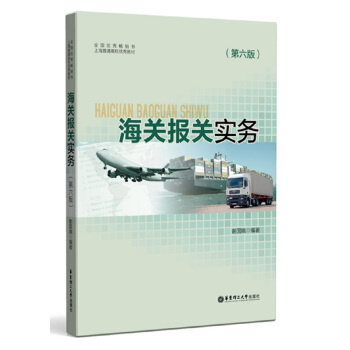
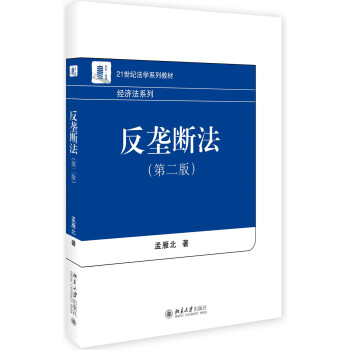
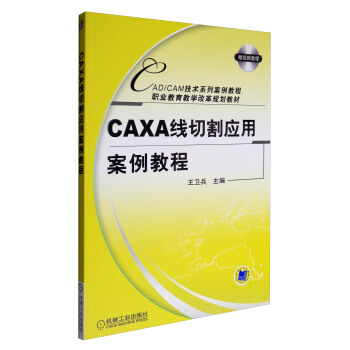
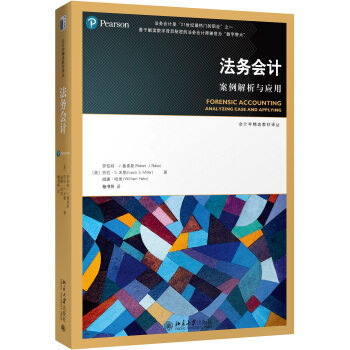
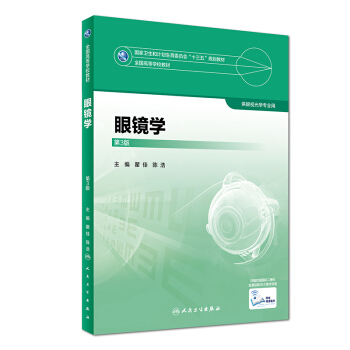
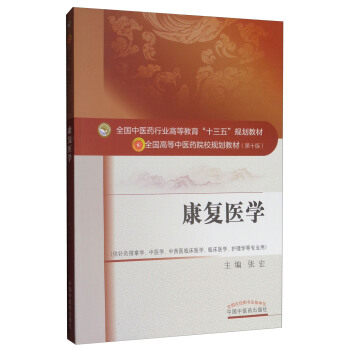


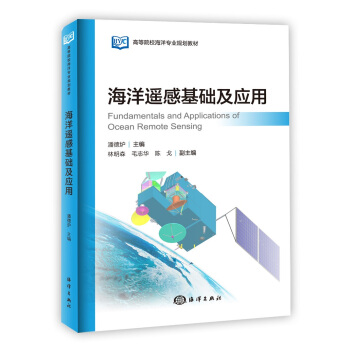
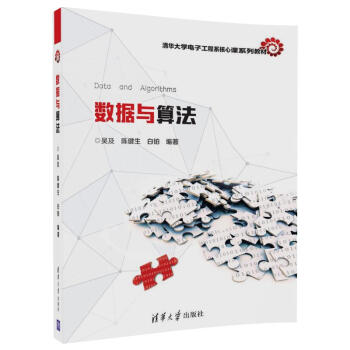
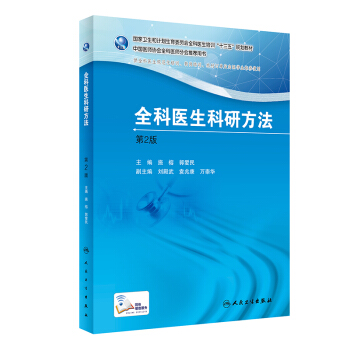

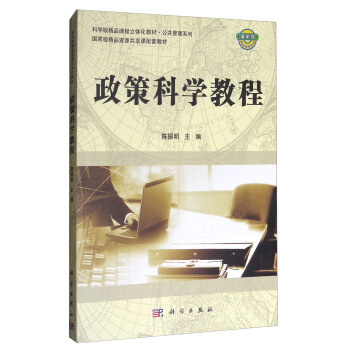
![高等有机化学(第3版)/高等学校教材 [Advanced Organic Chemistry] pdf epub mobi 电子书 下载](https://pic.tinynews.org/12202336/59531b08N2e0aad4a.jpg)

![肿瘤放射治疗学(第3版 供医学影像学专业用)/全国高等学校教材 [Radiation Oncology] pdf epub mobi 电子书 下载](https://pic.tinynews.org/12215958/59531b0aN9fb0d1e5.jpg)
![材料科学与工程基础(第2版)/材料科学与工程系列 [Fundamentals of Materials Science and Engineering] pdf epub mobi 电子书 下载](https://pic.tinynews.org/12225668/5989813aNc08dcc4a.jpg)
